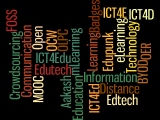The Early Grade Reading Assessment (EGRA), a tool used in over 50 low-income countries and 70 languages to measure students’ progress toward learning to read, is going digital through its new Tangerine™ platform. The mobile software application designed by RTI International specifically for recording student responses during the administration of the EGRA can now be used by organizations and governments to simplify preparation and implementation of fieldwork, reduce measurement and data entry errors, and eliminate manual data entry.
The EGRA is a 15-minute test administered orally to students in the early grades of primary school. It was designed by RTI International under USAID’s EdDAta II project to help educators in low-income countries break the pattern of illiteracy among their poor. Since 2006, the EGRA has been used to evaluate students’ foundation literacy skills, including pre-reading skills like phonemic awareness and listening comprehension, which have been shown to predict later reading abilities. Using test results, education ministries and their donor partners are then able to identify and address learning barriers to develop strategies to improve literacy.
But now Tangerine has taken the paper-based EGRA tool to a new level of efficiency. The open-source electronic data collection software can be used on mobile computers, including netbooks, tablet computers and smartphones to enable assessment administrators to:
- Simplify the preparation and implementation of field work
- Reduce measurement and data entry errors
- Eliminate costly, time-consuming manual data entry
- Provide rapid turnaround of results
Through these advantages and the analysis of results of student populations, policy makers and organizations can respond even sooner to challenges within an education system. They can also develop appropriate strategies to improve early-age literacy rates, such as improving teacher training programs and curriculum materials.
In addition to the Tangerine EGRA software, RTI developers are currently developing two new tools that can be used by teachers themselves in their own classrooms:
- Tangerine:Class – a version of Tangerine tailored specifically for teachers to assist in developing and administering classroom based math and reading assessments and interpreting results to inform their instructional practice.
- Tangerine:Teach – a tool that can interpret results from Tangerine:Class to identify and develop learning materials to address student weaknesses.
To learn more about Tangerine:
The Edutech Debate posted a blog, ICT and the Early Grade Reading Assessment: From Testing to Teaching by RTI’s Carmen Strigel, which offers an in-depth analysis of Tangerine’s application and cost benefits.
There is also a brief video of EGRA being administered using Tangerine.
























































